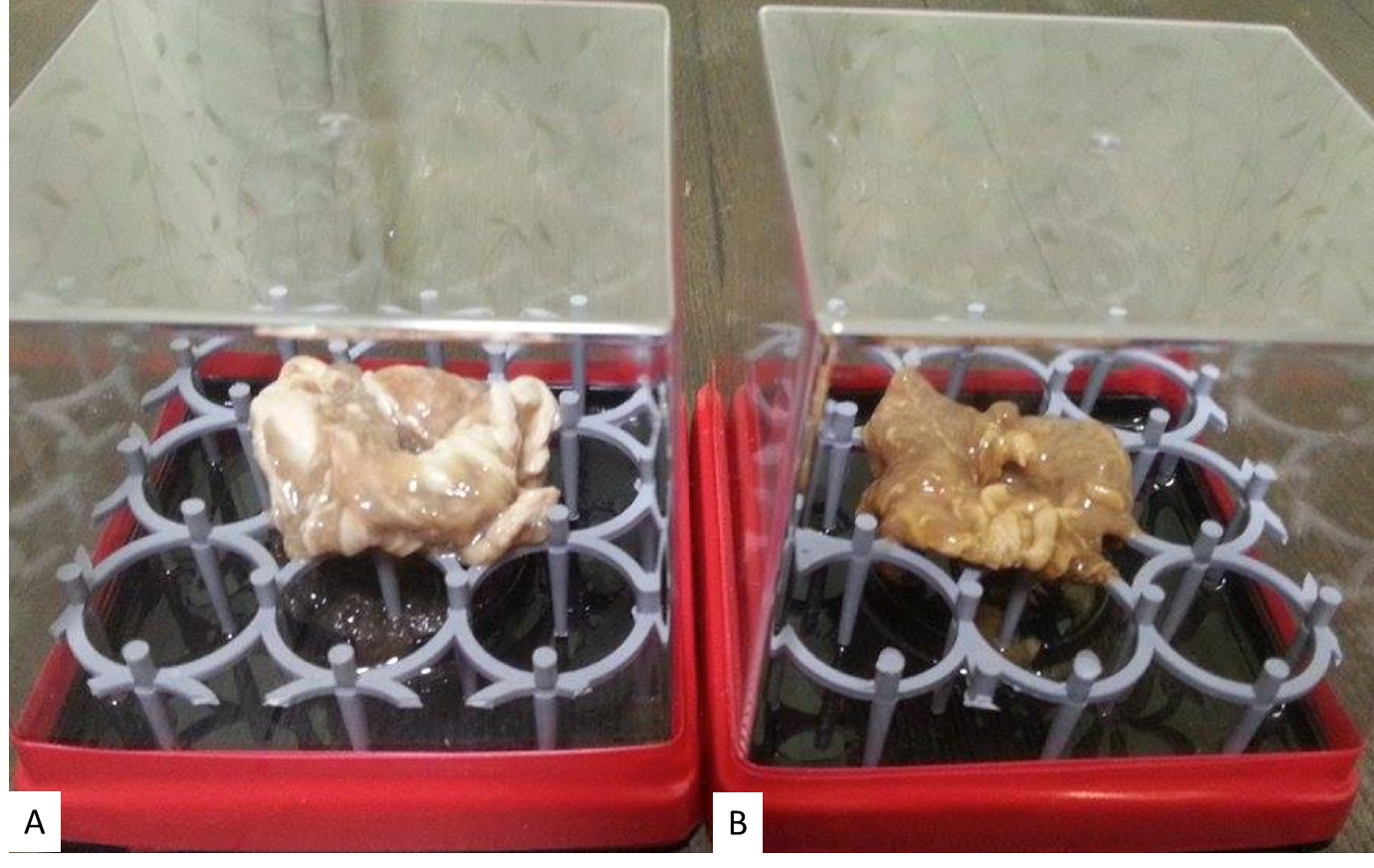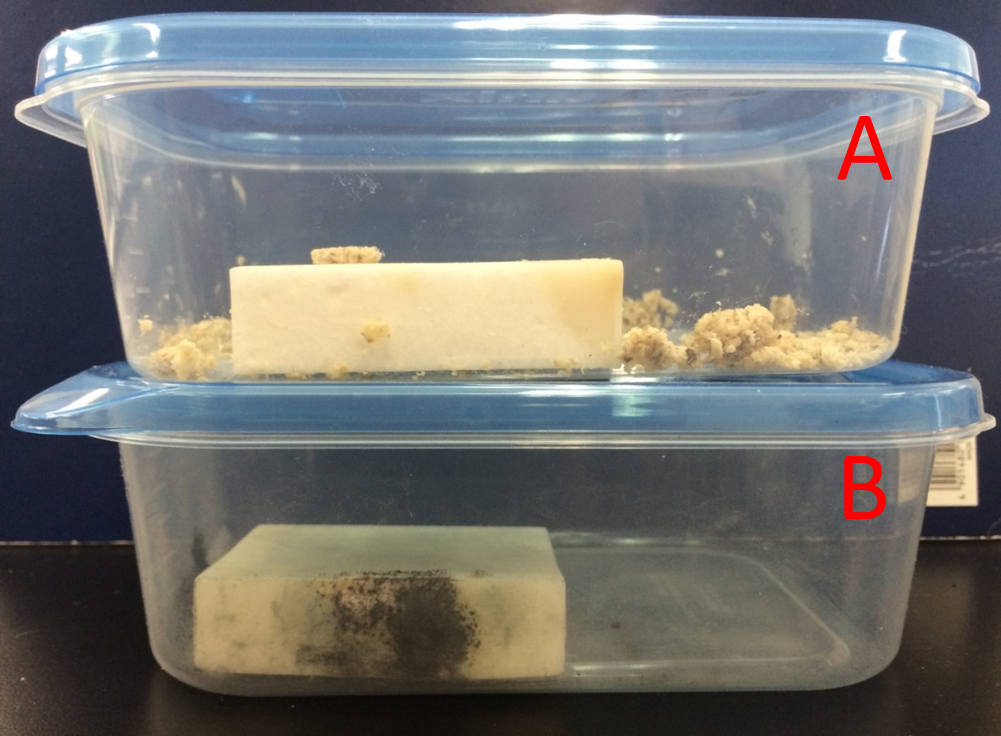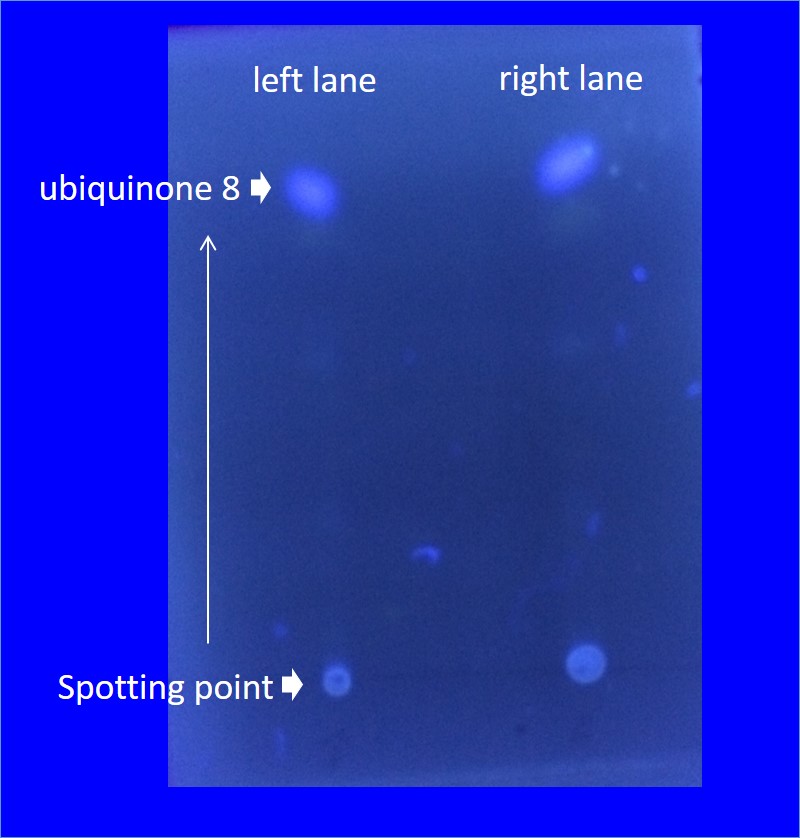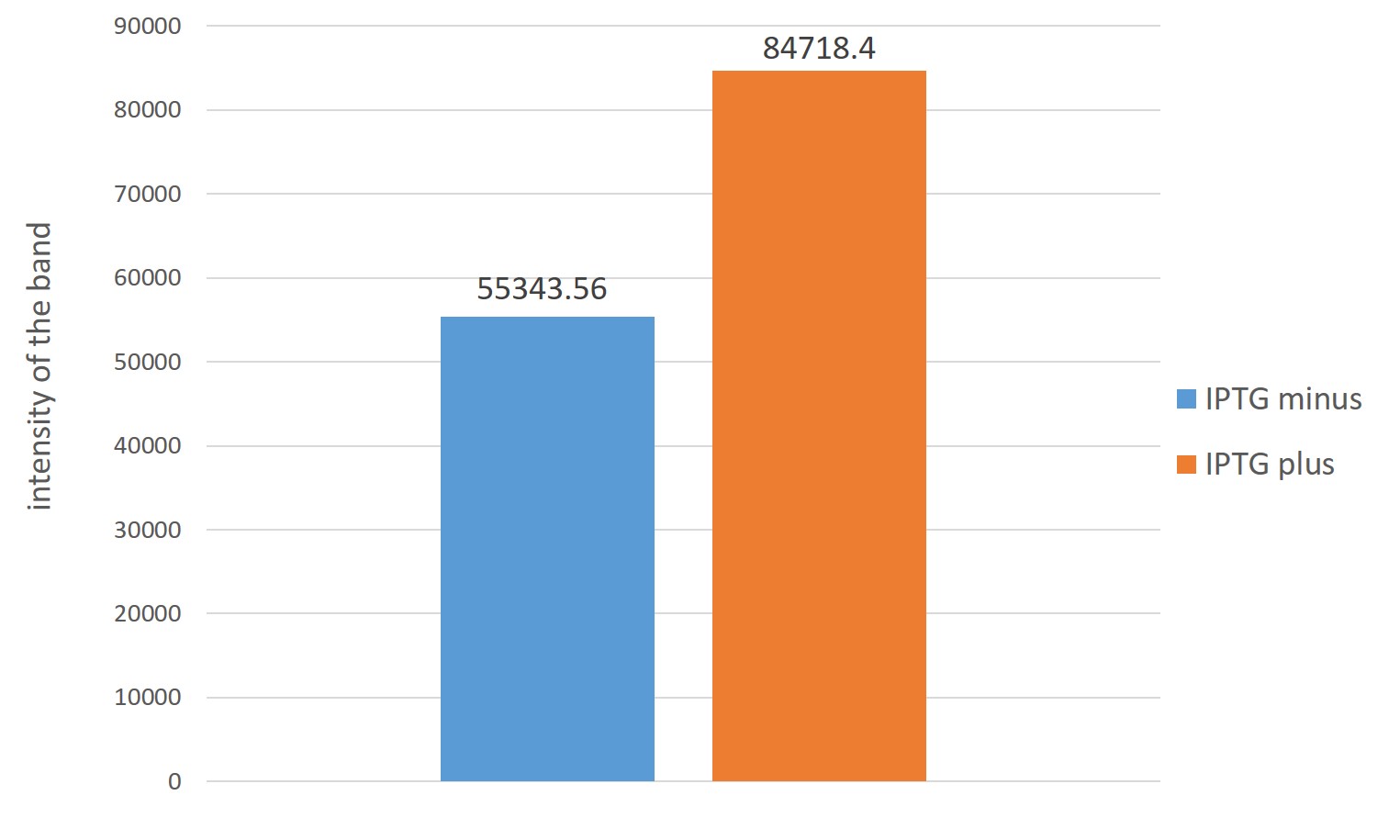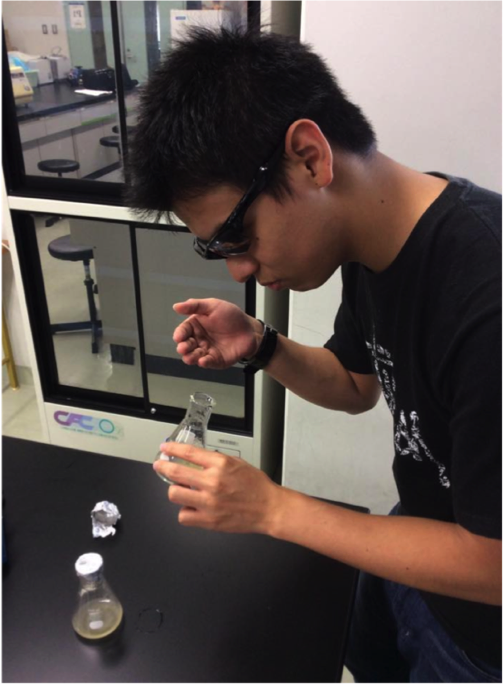Difference between revisions of "Team:Nagahama/Experiments"
(→Produce of Geraniol and Farnesol) |
(→Fragrance of wasabi) |
||
| Line 18: | Line 18: | ||
Wasabi grated produced its fragrances to suppress unwanted microbial growth. | Wasabi grated produced its fragrances to suppress unwanted microbial growth. | ||
| + | We spread the wasabi grated on the rice cake. | ||
| + | The rice cake didn’t change the color. | ||
We found from this result that fragrance of plants have antibacteril volatiles. | We found from this result that fragrance of plants have antibacteril volatiles. | ||
| − | [[File:もち.jpg| | + | |
| + | [[File:もち.jpg|600px|thumb|center| | ||
| + | Fig:Rice cake of the above (A) was spreaded the wasabi grated. Rice cake under (B) was spreaded nothing. We left each rice cake in the box at 18℃ for 2 month.Rice cake of the above (A) didn’t change the color. Rice cake under (B) changed white to Black. ]] | ||
==='''Fragrance of geraniol'''=== | ==='''Fragrance of geraniol'''=== | ||
Revision as of 03:59, 15 September 2015
Contents
Result and Discussion
Confirm antibacterial activity of each volatile substances derived from plant
First, we examined our working hypothesis to “Flavorator” that the volatile gaseous substances from plants’ origin can show either the antibacterial or bacteriostatic activity in a box like “KOZOKO”. The results clearly showed that all the volatile substances of wasabi(Japanese horse radish), rose, garlic and onion had antibacterial properties. In the literatures, wasabi, rose, garlic and onion have antibacterial volatiles, such as allyl isothiocyanete (wasabi), geraniol (rose), allicin (garlic), and lachrymaltory-factor (onion) These antibacterial volatiles are produced after complicated pathways, so for their syntheses, various enzymes are required Then, we searched metabolic pathways in E. coli, in which antibacterial volatiles can be either end products or intermediates. The search hit the geraniol. In E. coli, a precursor of geraniol, geranyl diphosphate (GPP), is synthesized. If we can successfully operate one enzyme to E. coli, it may synthesize geraniol using geranyl diphosphate as a precursor. In this context, we designed our system for establishing the concept of “Flavorator” to build up a brand-new biosynthetic pathways, in which geraniol is produced in the E. coli. In doing so, we transfer the three types of genes listed below to create the hyper-producer E. coli of geraniol.
We examined our working hypothesis to “Flavorator” that the volatile gaseous substances from plants’ origin can show either the antibacterial or bacteriostatic activity in a box like Kozoko.
Fragrance of Garlic
○Protocl here
Garlic grated produced its fragrances to suppress unwanted microbial growth. Left pork(A) didn't change the color. Right pork(B) changed Pink to Brown. We found from this result that fragrance of plants have antibacteril volatiles.
Fragrance of wasabi
Protocl here
Wasabi grated produced its fragrances to suppress unwanted microbial growth. We spread the wasabi grated on the rice cake. The rice cake didn’t change the color. We found from this result that fragrance of plants have antibacteril volatiles.
Fragrance of geraniol
Protocl here
Rose grated produced its fragrances to suppress unwanted microbial growth. We found from this result that fragrance of plants have antibacteril volatiles.
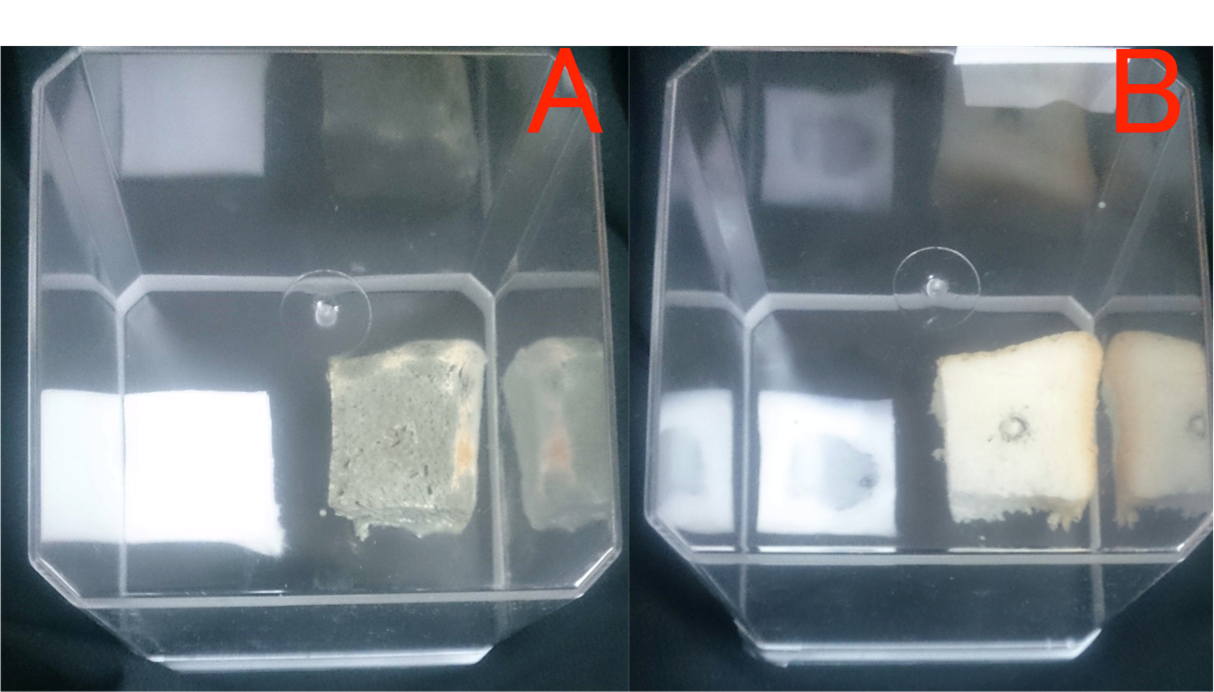
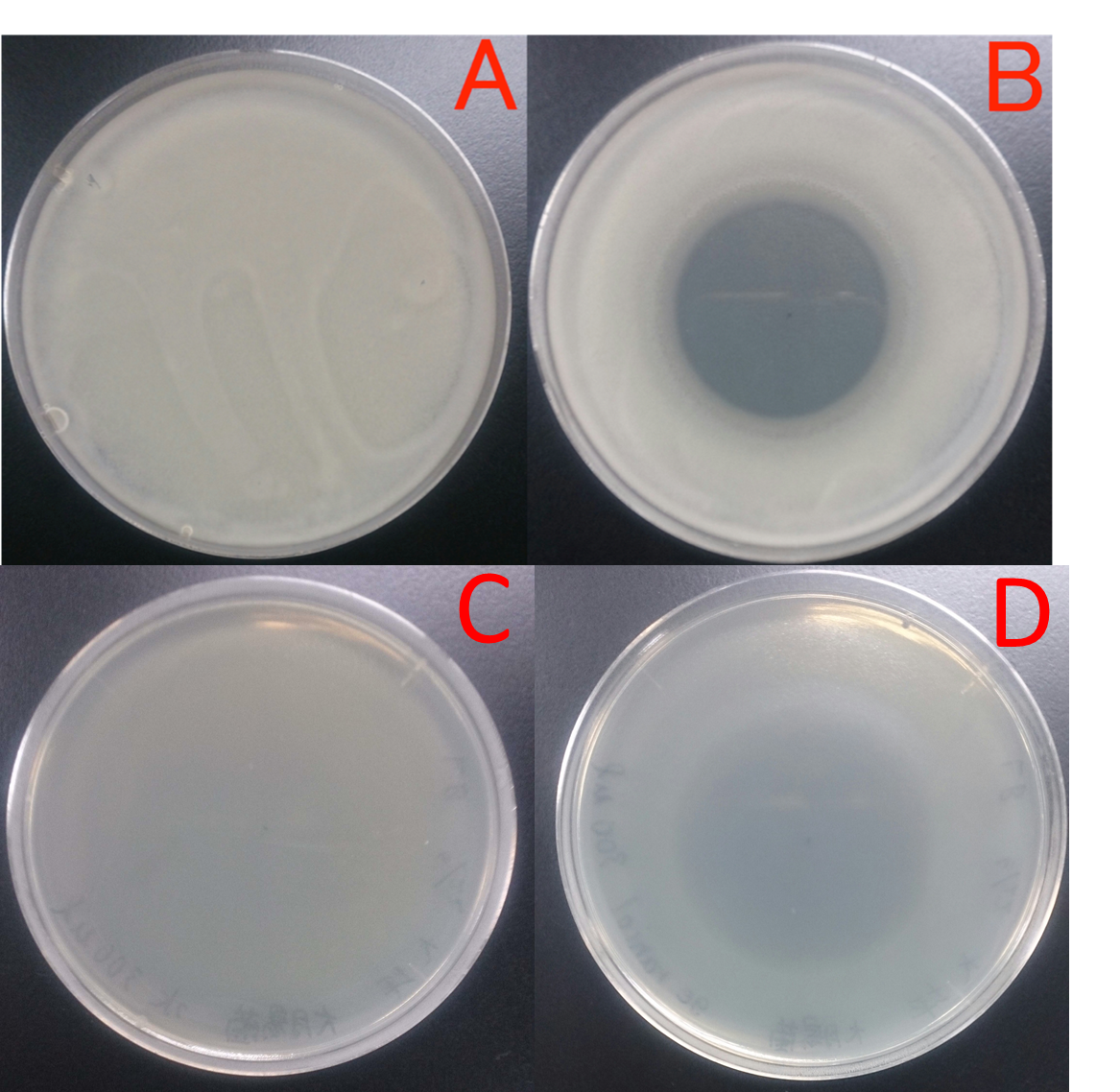
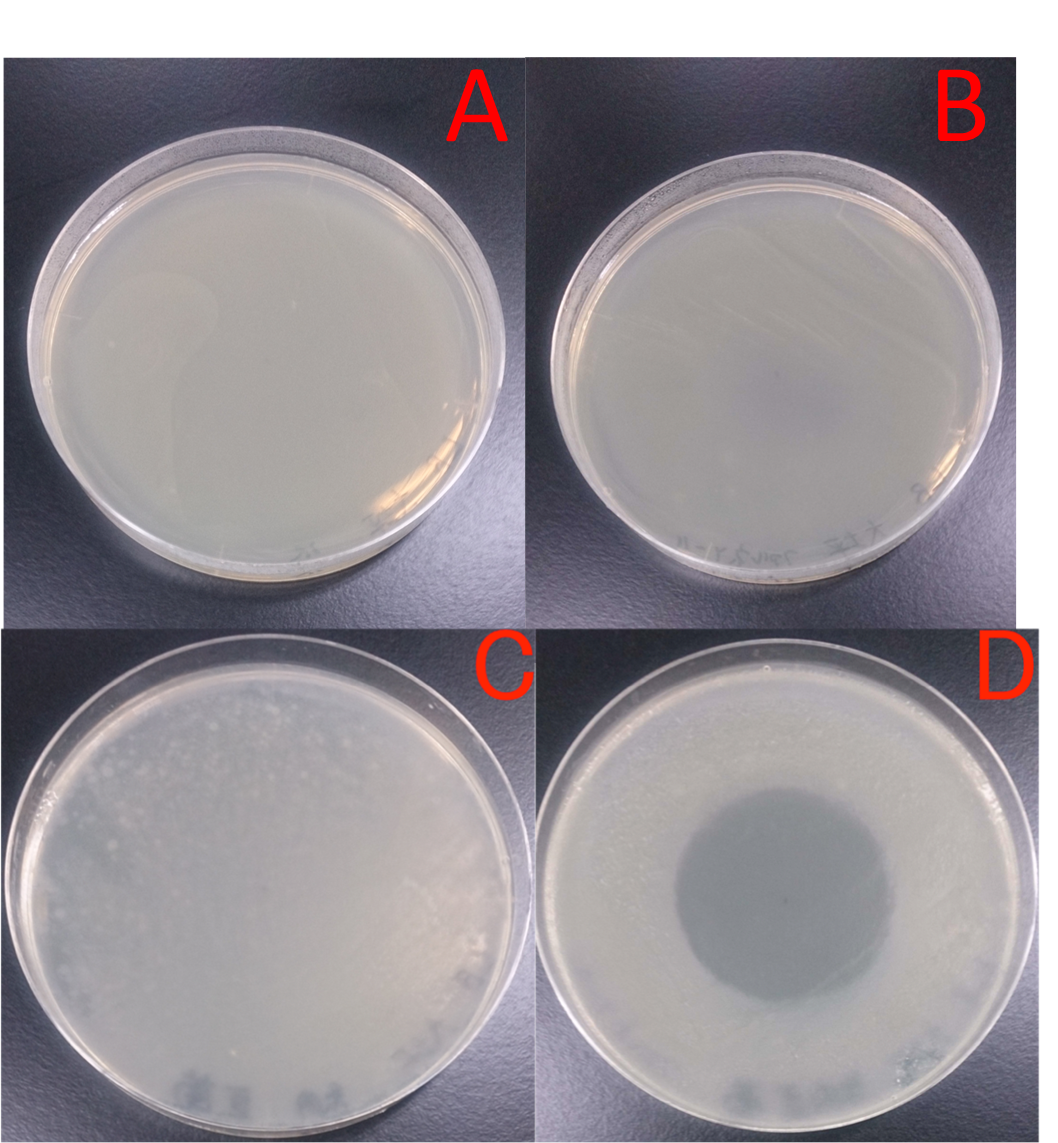
Increase in the amount of terpenoid's precursors
○protocol here
Analysis of ubiquinone-8 synthesized by E. coli JM109/[http://parts.igem.org/wiki/index.php?title=Part:BBa_K1653025 BBa_K1653025] by thin-layer chromatography (TLC)
Produce of Geraniol and Farnesol
Geraniol production
-
 fig9:The results of the questionnaire survey WT was 20% of the total, and recombinant(JM109/GES) was 80% of the total, suggesting that recombinant(JM109/GES) was stronger smell than WT. p-value is assumed fifty‐fifty that normally can occur, and the difference compared to that assumption. In this result, p-value is less than 0.01. This probability is beyond the range that can occur by chance. This experiment indicate that recombinant(JM109/GES) might being synthesize geraniol.
fig9:The results of the questionnaire survey WT was 20% of the total, and recombinant(JM109/GES) was 80% of the total, suggesting that recombinant(JM109/GES) was stronger smell than WT. p-value is assumed fifty‐fifty that normally can occur, and the difference compared to that assumption. In this result, p-value is less than 0.01. This probability is beyond the range that can occur by chance. This experiment indicate that recombinant(JM109/GES) might being synthesize geraniol. -
 fig10:The results of the questionnaire survey recombinant(JM109/Empty vector) was 50% of the total, and recombinant(JM109/GES) was 150% of the total, suggesting that recombinant(JM109/GES) was stronger smell than recombinant(JM109/Empty vector) . p-value is assumed fifty‐fifty that normally can occur, and the difference compared to that assumption. In this result, p-value is less than 0.05. This probability is beyond the range that can occur by chance. This experiment indicate that recombinant(JM109/GES) might being synthesize geraniol.
fig10:The results of the questionnaire survey recombinant(JM109/Empty vector) was 50% of the total, and recombinant(JM109/GES) was 150% of the total, suggesting that recombinant(JM109/GES) was stronger smell than recombinant(JM109/Empty vector) . p-value is assumed fifty‐fifty that normally can occur, and the difference compared to that assumption. In this result, p-value is less than 0.05. This probability is beyond the range that can occur by chance. This experiment indicate that recombinant(JM109/GES) might being synthesize geraniol.
Farnesol production
Farnesol production device ([http://parts.igem.org/wiki/index.php?title=Part:BBa_K1653025 BBa_K1653025])
E. coli strain engineered with MEP pathway enzymes, ispDF, idi, and dxs , in combination with the enzyme gens, ispA, produced farnesol (Fig. 4B), which was detected by the Gas chromatography/Mas (Fig. 4A-G), having the same retention time as the farnesol chemica sample (Fig. 4A), while the counterpart control E. coli did not produce farnesol under the same conditions (Fig. 4C). Neither E. coli engineered with MEP pathway enzymes only nor the one engineered ispA only showed any farnesol by the Gas chromatography/Mass (Figs. 4D and E). Farnesol is generated through hydrolysis of farnesyl diphosphate (FPP) by the endogenous phosphatases. Increase in farnesol should be associated with an increased intracellular FPP level. FPP is, in turn, converted from geranyl diphosphate (GPP), whose precursors are IPP and DMAPP. IPP and DMPP are end products of MEP pathway that exists in E. coli. Conversion to FPP from IPP or DMPP requires ispA (or m-ispA). Following this context, we speculate that E. coli could produce farnesol better than the counterpart control cells under the up-regulated cellular conditions of an increased intracellular MEP pathway enzymes by metabolic engineering in combination with the special enzyme that converts IPP or DMAPP into FPP.
Gas Chromatography/Mass(GC/MS)

Efficient export of geraniol from E. coli to the media
Export
 [http://parts.igem.org/wiki/index.php?title=Part:BBa_K1653020 BBa_K1653020]
[http://parts.igem.org/wiki/index.php?title=Part:BBa_K1653020 BBa_K1653020]
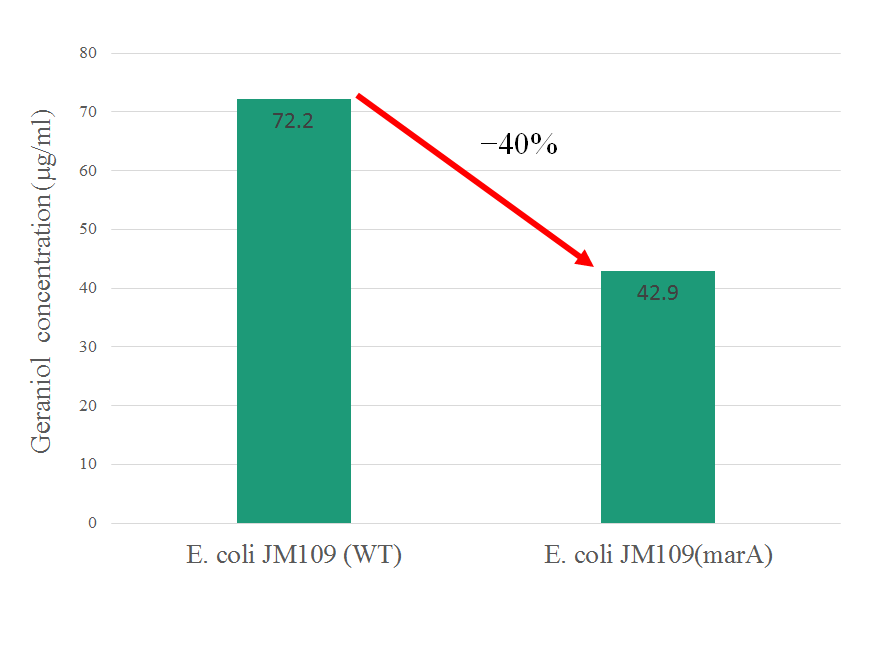
In this figure, intracellular content of geraniol was less in the strain E. coli JM109 (marA) than the strain E. coli JM109 (WT). The concentrations of intracellular geraniol from E. coli JM109 (marA) was 42.9 μg/ml, which was 40% lower than that from of E. coli JM109 (WT), 72.2 μg/ml. This figure is suggesting that internalized geraniol could be more efficiently exported through AcrAB-TolC efflux pump following the presumed activation of this gene by introducing the activator marA gene.
Resistance
 [http://parts.igem.org/wiki/index.php?title=Part:BBa_K1653020 BBa_K1653020]
[http://parts.igem.org/wiki/index.php?title=Part:BBa_K1653020 BBa_K1653020]



